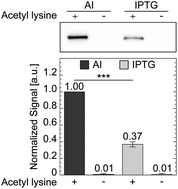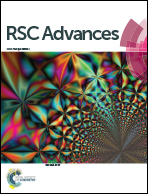Chemically-defined lactose-based autoinduction medium for site-specific incorporation of non-canonical amino acids into proteins
Abstract
Genetic code expansion technology enables the site-specific incorporation of dozens of non-canonical amino acids (NCAAs) into proteins expressed in live cells. The NCAAs can introduce various chemical functionalities into proteins, ranging from natural post-translational modifications, to spectroscopic probes and chemical handles for bioorthogonal reactions. These chemical groups provide powerful tools for structural, biochemical, and biophysical studies, which may require significant quantities of recombinantly expressed proteins. NCAAs are usually encoded by an in-frame stop codon, such as the TAG (amber) stop codon, which leads to the expression of C-terminally truncated proteins. In addition, the incubation medium should be supplemented with the NCAA at a final concentration of 1–10 mM, which may be challenging when the availability of the NCAA is limited. Hence, bacterial expression of proteins carrying NCAAs can benefit from improvement in protein yield per given amount of added NCAA. Here, we demonstrate the applicability of an optimized chemically-defined lactose-based autoinduction (AI) medium to the expression of proteins carrying a NCAA, using the archaeal pyrrolysyl-tRNA synthetase/tRNA pair from the Methanosarcina genus. Per given amount of added NCAA, the use of AI medium improved protein expression levels by up to 3-fold, compared to IPTG induction, without an increase in misincorporation of canonical amino acids in response to the in-frame stop codon. The suggested medium composition can be used with various Escherichia coli variants transformed with different expression vectors and incubated at different temperatures.



 Please wait while we load your content...
Please wait while we load your content...